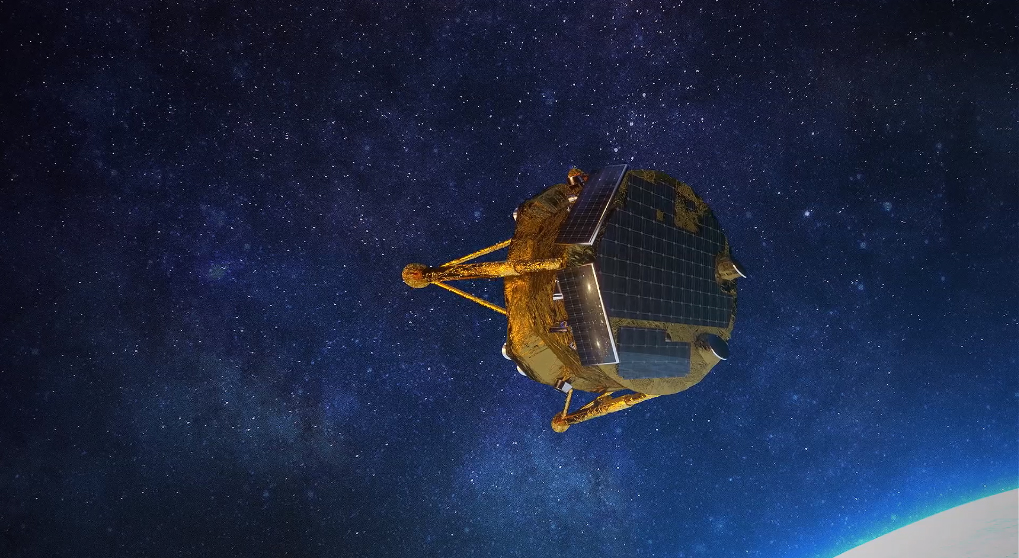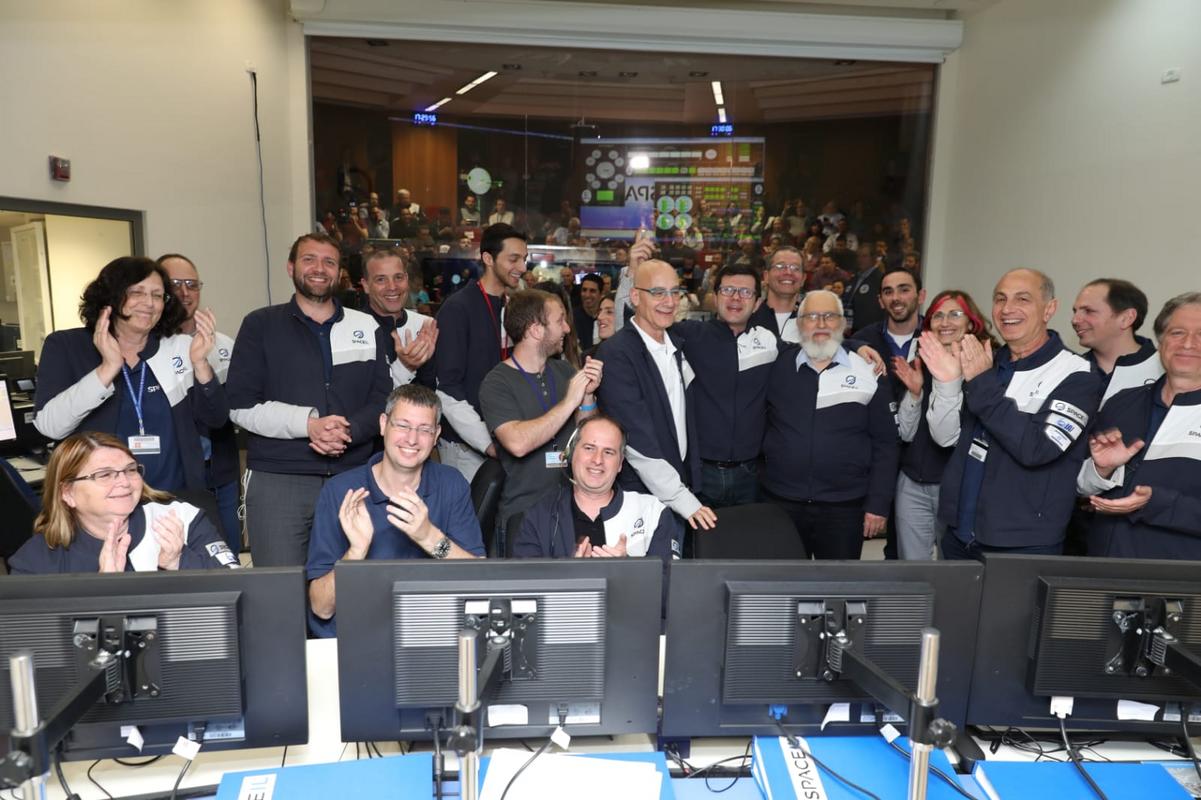
Israel just became the seventh nation to orbit the moon.
After slowly spiraling away from Earth for the past six weeks, an Israeli spacecraft known as Beresheet slipped into orbit around the moon today (April 4).
This was a historic achievement for the little robot, but it paves the way for something truly epic: a lunar touchdown attempt a week from now. If Beresheet succeeds on April 11, it will become the first Israeli craft, and the first privately funded vehicle, ever to land softly on the surface of the moon.
"The lunar capture is an historic event in and of itself — but it also joins Israel in a seven-nation club that has entered the moon’s orbit," Morris Kahn said in a statement. "A week from today, we'll make more history by landing on the moon, joining three superpowers who have done so. Today I am proud to be an Israeli."
Kahn chairs SpaceIL, the nonprofit organization that runs Beresheet's mission along with Israel Aerospace Industries, the nation's largest aerospace and defense contractor.
Related: Israel's 1st Moon Lander Beresheet in Pictures
The superpowers he referenced are the deep-pocketed governments of the Soviet Union, the United States and China. So, Beresheet also aims to strike a blow for low-cost space exploration; the total mission price tag, including launch, is about $100 million, project team members have said.
Get the Space.com Newsletter
Breaking space news, the latest updates on rocket launches, skywatching events and more!
Beresheet's mission got its start in 2011, when SpaceIL formed to compete in the Google Lunar X Prize (GLXP).
The GLXP challenged privately funded teams to land a robot on the moon, move it at least 1,650 feet (500 meters) on the surface and have it beam high-resolution imagery home to Earth. The first group to accomplish these tasks would get $20 million, and the second-place team would snare $5 million. An additional $5 million was available for various special accomplishments, bringing the total purse to $30 million.

The GLXP aimed to help spur private space exploration. The contest ended last year without a winner, but it still succeeded in its primary objective, as SpaceIL's progress to date shows. And several other former GLXP teams, including the American company Moon Express, have continued to develop their spacecraft as well.
Beresheet launched to Earth orbit atop a SpaceX Falcon 9 rocket on the night of Feb. 21. The spacecraft performed a series of engine burns over the following six weeks, pushing the farthest reaches of its elliptical orbit closer and closer to the moon.
And today, the moon reached out and grabbed Beresheet. The milestone came after a 6-minute engine burn, which began this morning at 10:18 a.m. EDT (1418 GMT). This braking maneuver reduced Beresheet's velocity relative to the moon, allowing lunar gravity to capture the craft, project team members said.
"After six weeks in space, we have succeeded in overcoming another critical stage by entering the moon’s gravity," SpaceIL CEO Ido Anteby said in the statement. "We still have a long way until the lunar landing, but I‘m convinced our team will complete the mission to land the first Israeli spacecraft on the moon, making us all proud."
The lander will spend the next week lowering and circularizing its orbit and prepping for touchdown, which will occur on the lunar near side's Mare Serenitatis ("Sea of Serenity"). The mission will end shortly after this historic moment; Beresheet is expected to operate for just two or three Earth days on the moon's surface.

The lander will gather some data during its time around and on the moon; it will measure local lunar magnetic fields, for example. And Beresheet carries a technology demonstration for NASA — a small laser retroreflector array, which could help future spacecraft perform precision landings on the moon and other celestial bodies.
But Beresheet's main goals aren't scientific. The mission aims to advance Israel's space program and to inspire children around the world — but especially in Israel — to care more about science, technology, engineering and math.
This outreach work has already begun. SpaceIL personnel have met with more than 1 million Israeli schoolkids since the nonprofit was created in 2011, mission team members said. And Beresheet's handlers have released photos from Earth orbit showing the lander's Israeli flag in the foreground and its home planet in the background.
Beresheet is also helping preserve human culture. The lander carries a time capsule that contains, among things, a "lunar library" put together by the nonprofit Arch Mission Foundation.
The library is part of Arch's Billion Year Archive initiative, which stores backups of our species' accumulated knowledge at various locations on and off Earth.
"By delivering many copies to many places, and updating them with new installments on an ongoing basis, we intend to gradually pepper the solar system with the records of our civilization," Arch Mission Foundation representatives wrote in a project description.
"The more Arch Libraries we deliver into the Billion Year Archive, and [the] more places we store them, the more likely it is that at least some of them will survive for billions of years into the future, when they may eventually be found by those who come after us," they added.
- Israel's 1st Moon Lander: The SpaceIL Beresheet Lunar Mission in Pictures
- Why It'll Take Israel's Lunar Lander 8 Weeks to Get to the Moon
- Israeli Moon Lander Snaps Epic Space Selfie with a Full Earth
Mike Wall's book about the search for alien life, "Out There" (Grand Central Publishing, 2018; illustrated by Karl Tate), is out now. Follow him on Twitter @michaeldwall. Follow us on Twitter @Spacedotcom or Facebook.
Join our Space Forums to keep talking space on the latest missions, night sky and more! And if you have a news tip, correction or comment, let us know at: community@space.com.

Michael Wall is a Senior Space Writer with Space.com and joined the team in 2010. He primarily covers exoplanets, spaceflight and military space, but has been known to dabble in the space art beat. His book about the search for alien life, "Out There," was published on Nov. 13, 2018. Before becoming a science writer, Michael worked as a herpetologist and wildlife biologist. He has a Ph.D. in evolutionary biology from the University of Sydney, Australia, a bachelor's degree from the University of Arizona, and a graduate certificate in science writing from the University of California, Santa Cruz. To find out what his latest project is, you can follow Michael on Twitter.








